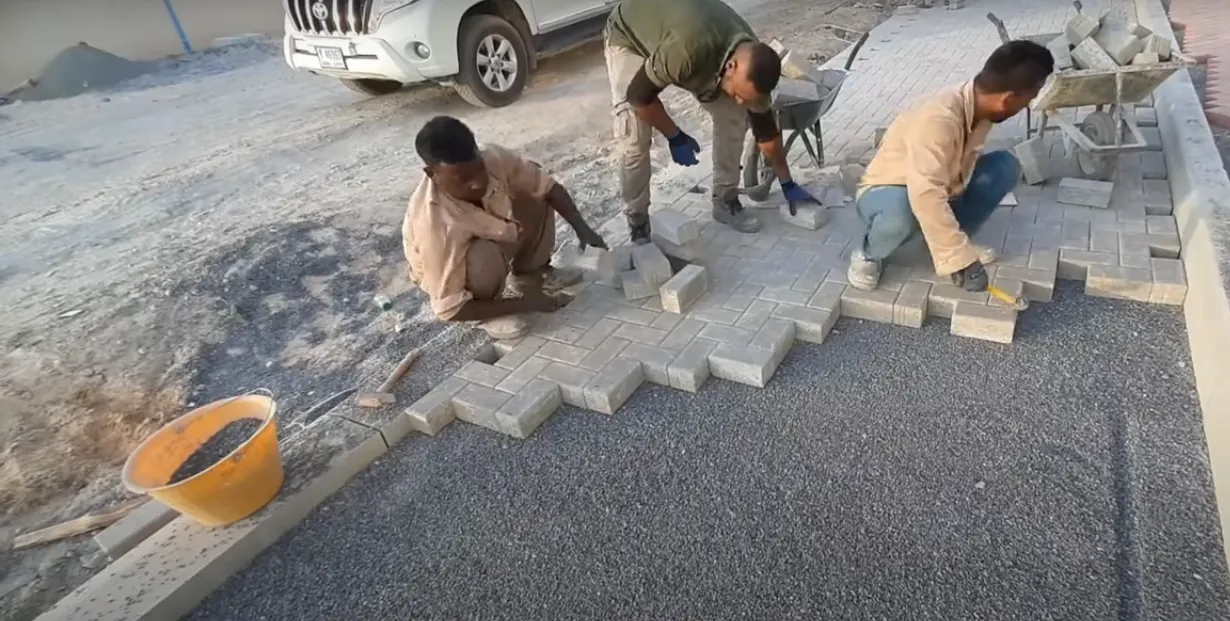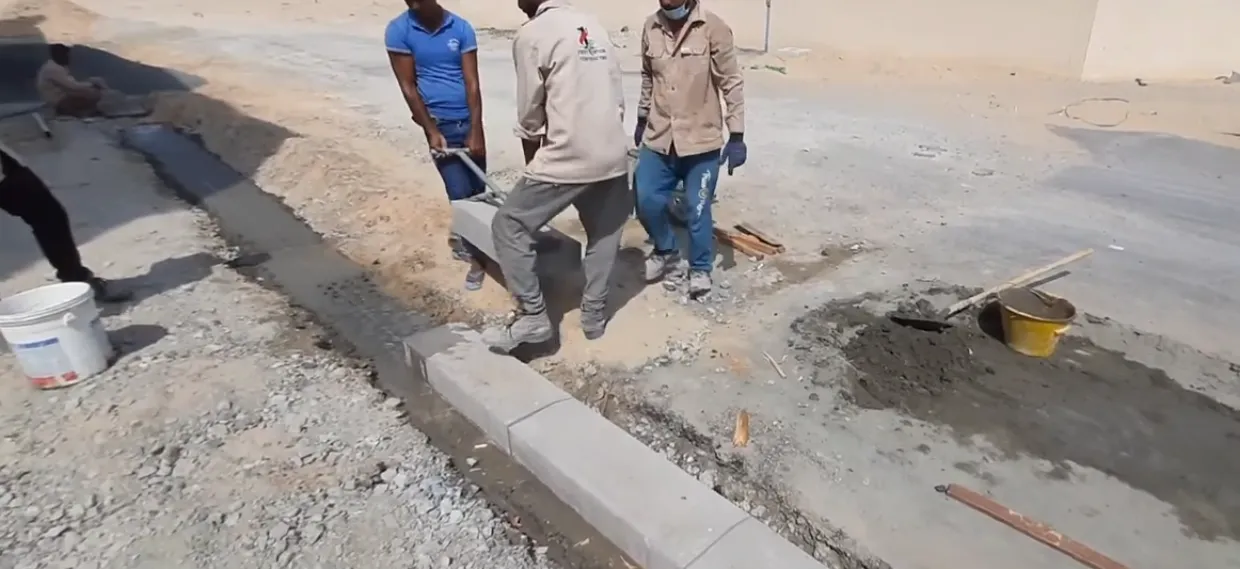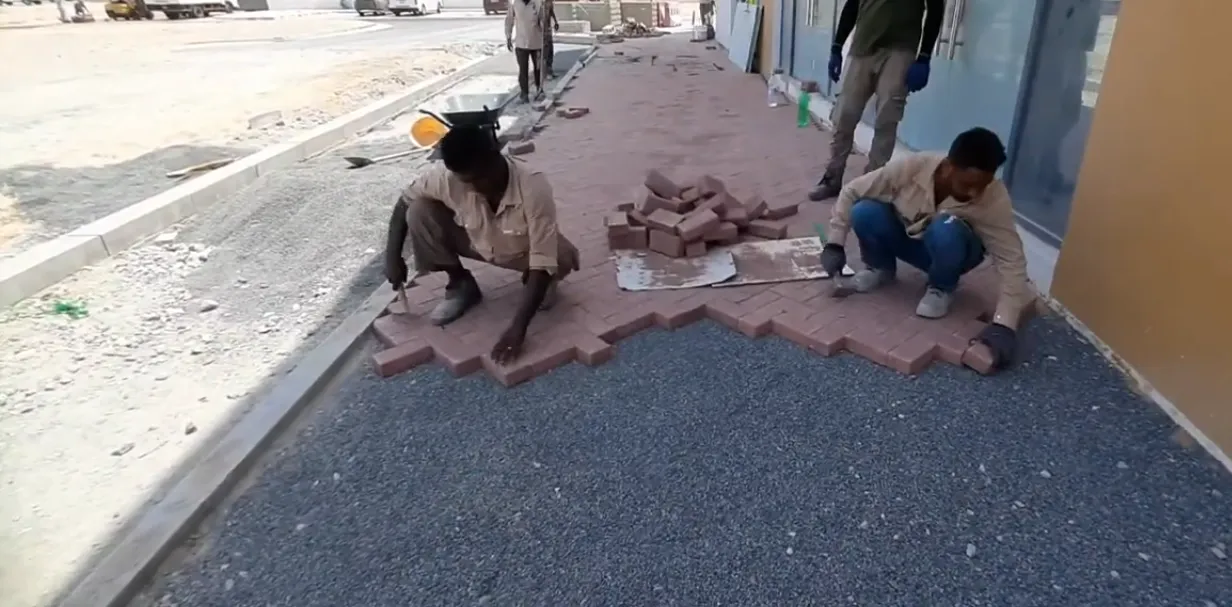Learn how fixing interlock bricks easily with this step-by-step guide. Ideal for both homeowners and commercial properties in Dubai.
Introduction to Fixing Interlock Bricks
Interlocking bricks are a popular choice for landscaping projects, patios, driveways, and walkways. Their ability to lock together like puzzle pieces creates a sturdy and visually appealing surface. But, like all outdoor materials, time and use can lead to loose bricks, uneven surfaces, or even cracks. Knowing the right way of fixing interlock bricks can save both time and money while preserving the beauty of the space.
This guide will take you through the process of fixing interlocking bricks step by step, ensuring your outdoor space looks as good as new.
Why Choose Interlocking Bricks?
Before jumping into the repair process, it’s important to understand why interlocking bricks are so popular:
- Durability: Interlocking bricks are built to withstand the harshest of weather conditions—whether it’s the blazing heat of Dubai or unexpected rainfall.
- Flexibility: They are perfect for creating pathways, patios, and driveways because they can move slightly with the ground, preventing cracking.
- Ease of Maintenance: Unlike concrete slabs, if one brick gets damaged, it’s easy to fix or replace without disturbing the rest of the area.
However, even the most durable materials need some TLC (tender loving care) from time to time!
Common Problems with Interlocking Bricks
When it comes to fixing interlock bricks, it’s important to first recognize what might go wrong:
- Loose Bricks: Over time, bricks may shift due to ground movement or constant foot or vehicle traffic.
- Uneven Surfaces: Sand or base material under the bricks may settle or wash away, causing dips or bumps.
- Weeds and Grass: Nature has a way of sneaking between the cracks, which can displace bricks over time.
- Staining or Discoloration: Though not a structural issue, stains from oils or water damage can affect the look of the bricks.
The good news? These problems can be easily fixed with some know-how and elbow grease!
Step-by-Step Guide to Fixing Interlock Bricks
Step 1: Identify the Problem Area
First, take a good look at the area. Are there loose bricks, dips, or uneven surfaces? Knowing the exact problem will help guide the repair process.
Step 2: Remove the Problem Bricks
Using a flathead screwdriver or a brick pry bar, carefully remove the loose or damaged bricks. If the bricks are tightly packed, you might need to wiggle them slightly to loosen them. Make sure to keep them in order, so they can be replaced in the same pattern.
Step 3: Check the Base
The most common issue with interlocking brick surfaces is the base material. If it’s uneven or has washed away, this is the root of the problem. Clear away any debris, weeds, or old sand from the affected area.
Step 4: Add New Sand or Gravel
Once the base is clear, add fresh sand or gravel. Spread it evenly across the area to create a level surface. For driveways or heavier traffic areas, consider using a gravel base for extra support.
Step 5: Replace the Bricks
Now comes the fun part—fixing interlocking bricks by putting them back in their original positions. Gently press each brick into place, ensuring they are level with the surrounding surface. For a snug fit, use a rubber mallet to tap them down.
Step 6: Fill the Gaps
After all the bricks are back in place, sweep fine sand into the gaps between the bricks. This helps to lock them together and prevent movement. Use a broom to ensure the sand fills all the spaces.
Step 7: Compact the Area
To finish, run a plate compactor or manually press down the area to secure the bricks and sand. After compacting, sweep more sand over the surface to fill any remaining gaps.
Step 8: Prevent Future Problems
For long-lasting results, consider applying a brick sealer to prevent staining and to help lock the sand in place. Additionally, regular maintenance like sweeping and occasional re-sanding can keep your interlocking brick surface in top shape for years.
Maintaining Your Interlocking Bricks
Fixing the bricks is just one part of the process. Here’s how to maintain them to avoid frequent repairs:
- Sweep regularly: A simple sweep every few weeks prevents dirt and debris from settling between the bricks.
- Re-sand the joints: Every year or two, re-sand the spaces between the bricks to keep them locked tightly together.
- Seal the surface: Applying a sealant will protect the bricks from water damage and staining, especially in high-traffic areas.
Benefits of Hiring Professionals
While fixing interlocking bricks can be a DIY project, hiring professionals like KSA Landscape & Gardening L.L.C. ensures a seamless and durable finish. Professional landscapers have the experience and tools necessary to not only repair but enhance the longevity of your outdoor space.
Call to Expert
If your interlocking bricks need fixing or a complete overhaul, KSA Landscape & Gardening L.L.C. has the expertise to ensure your outdoor space remains stunning and functional. Whether it’s a driveway, patio, or garden path, our team offers professional services tailored to your specific needs. Call +971586915520 today to schedule an inspection and get a free quote!
In summary, while fixing interlocking bricks can be done as a DIY project, trusting professionals ensures a long-lasting solution. A well-maintained interlocking brick surface not only looks great but also adds value to your property.
FAQs About Fixing Interlock Bricks
How often do interlocking bricks need to be repaired?
Interlocking bricks generally need minimal maintenance, but repairs may be needed every few years depending on the level of traffic and weather conditions. Regular maintenance can help prolong the time between repairs.
Can interlocking bricks be repaired without removing all the bricks?
Yes, individual bricks can be fixed or replaced without disturbing the entire surface. This is one of the great advantages of interlocking bricks over other materials like concrete.
What causes interlocking bricks to become loose?
Bricks can loosen due to shifting of the underlying base, erosion, or simply wear and tear from constant foot or vehicle traffic. The settling of sand between the bricks can also contribute to movement.
How can weed growth between bricks be prevented?
Applying a weed barrier or using polymeric sand (which hardens when wet) can help prevent weeds from growing between the cracks. Regular maintenance and re-sanding also help.
Is sealing interlocking bricks necessary?
Sealing interlocking bricks is not mandatory but highly recommended. It protects against stains, water damage, and shifting. Sealant can also enhance the color and appearance of the bricks.



